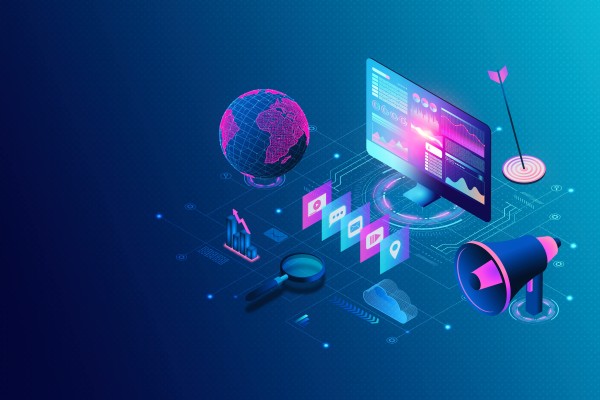The Power of EdTech Tools in the Classroom:
- Facilitating Personalized Learning Experiences: EdTech tools enable educators to tailor instruction to individual student needs, promoting personalized learning. Learning management systems (LMS) provide a platform for teachers to deliver customized content, assign targeted exercises, and track student progress. Adaptive learning software adjusts the difficulty level of material based on each student's abilities, ensuring an optimized learning experience.
- Fostering Student Engagement: Interactive whiteboards and educational apps capture students' attention and create an immersive learning environment. These tools incorporate multimedia elements such as videos, simulations, and gamification, making lessons more engaging and interactive. By stimulating students' curiosity and participation, EdTech tools foster a deeper understanding and retention of knowledge.
- Promoting Collaboration Among Peers: EdTech tools facilitate collaboration and communication among students, breaking down geographical barriers and promoting teamwork. Online discussion platforms encourage peer-to-peer interaction, allowing students to exchange ideas, ask questions, and provide feedback. Virtual collaboration tools enable real-time collaboration on group projects, encouraging teamwork and problem-solving skills.
- Learning Management Systems (LMS): LMS platforms streamline administrative tasks and provide a centralized hub for course materials, assignments, and assessments. They enable teachers to deliver content, track student progress, and provide feedback in a structured and organized manner. LMSs also offer communication tools for discussions, announcements, and individualized support.
- Interactive Whiteboards: Interactive whiteboards transform traditional classrooms into dynamic learning spaces. Teachers can project digital content, annotate it in real-time, and engage students through interactive exercises. These whiteboards encourage active participation, making lessons more visually appealing and fostering a collaborative learning environment.
- Educational Apps: Educational apps cover a wide range of subjects and provide interactive learning experiences. They offer engaging activities, quizzes, and tutorials that cater to various learning styles. Educational apps often include progress tracking features, allowing students to monitor their own growth and receive instant feedback.
- Virtual Reality (VR) Applications: VR applications offer immersive experiences, allowing students to explore virtual environments and interact with content. VR can transport learners to historical events, scientific simulations, or cultural landmarks, providing a deeper understanding of complex concepts. This technology stimulates students' curiosity and enhances their ability to visualize abstract ideas.
Incorporating these EdTech tools into the classroom empowers teachers to deliver personalized instruction, engages students through interactive experiences, and cultivates collaboration among peers. By harnessing the power of technology, educators can create a dynamic and inclusive learning environment that prepares students for success in the digital age.
Enabling Access to Quality Education:
EdTech tools play a pivotal role in bridging the education gap and ensuring that students in underserved communities or remote areas have access to quality educational resources. Here's how EdTech tools are making education more accessible and affordable for learners worldwide:
- Online Courses: Online courses offer a flexible and accessible learning option, breaking down barriers of time and location. EdTech platforms provide a vast array of online courses, covering a wide range of subjects and disciplines. Students can access these courses from anywhere, allowing them to learn at their own pace and according to their individual schedules. Online courses democratize education by providing opportunities for lifelong learning and skill development to individuals who may not have access to traditional educational institutions.
- Digital Textbooks: Digital textbooks have revolutionized the way students access educational content. Unlike traditional print textbooks, digital textbooks can be accessed on various devices such as tablets, laptops, or smartphones. This accessibility eliminates the need for physical copies, reducing costs and logistical challenges. Additionally, digital textbooks often offer interactive features such as embedded multimedia elements, searchable text, and interactive quizzes, enhancing the learning experience for students.
- Open Educational Resources (OER): OER are freely accessible learning materials that can be used, modified, and shared by educators and students. These resources include textbooks, lecture notes, videos, and interactive modules. OER allow educators to adapt and customize content to suit the specific needs of their students. By eliminating the cost barrier associated with traditional textbooks, OER ensure that educational resources are available to learners of all economic backgrounds, promoting equity in education.
- Remote Learning: EdTech tools have been instrumental in facilitating remote learning, especially during times of crisis or when physical attendance at schools is not possible. Virtual classrooms, video conferencing platforms, and collaboration tools enable students to participate in interactive online classes and engage with their peers and teachers remotely. Remote learning has proven to be a valuable solution for students in remote areas or those facing mobility challenges, providing access to quality education that may not have been available otherwise.
- Adaptive Learning Platforms: Adaptive learning platforms use data-driven algorithms to personalize instruction based on individual student needs. These platforms assess students' strengths and weaknesses, adapt content accordingly, and provide targeted learning resources. Adaptive learning technology ensures that students receive tailored support, allowing them to progress at their own pace and overcome learning barriers.
EdTech tools are breaking down barriers to education by providing access to quality educational resources and opportunities for learners worldwide. Online courses, digital textbooks, OER, remote learning, and adaptive learning platforms are transforming education into a more inclusive and equitable experience, regardless of geographical location or socioeconomic background. Through the power of EdTech, individuals have the ability to pursue their educational goals and unlock their full potential, contributing to a more educated and empowered society.
Empowering Educators with Innovative Teaching Methods:
- Personalized Learning Pathways: EdTech tools enable teachers to create personalized learning pathways tailored to individual student needs. Learning management systems (LMS) and educational apps provide adaptive learning features, allowing educators to assign specific content, exercises, and assessments based on each student's strengths, weaknesses, and learning style. This personalized approach helps students progress at their own pace, fostering a deeper understanding of the subject matter.
- Tracking Student Progress: EdTech tools offer comprehensive data tracking and analytics capabilities, allowing teachers to monitor student progress in real-time. Through LMS platforms and data dashboards, educators gain insights into students' performance, engagement levels, and learning patterns. This data-driven approach enables teachers to identify areas of improvement, provide targeted interventions, and track the effectiveness of their teaching strategies.
- Targeted Feedback and Assessment: EdTech tools facilitate timely and targeted feedback, enhancing the assessment process. Online assessment platforms enable teachers to provide immediate feedback on assignments, quizzes, and exams, promoting a continuous learning cycle. Additionally, multimedia tools allow teachers to provide audio or video feedback, which can be more personalized and impactful than written feedback. This targeted feedback supports students' growth and helps them understand their strengths and areas for improvement.
- Professional Development Programs and Training: The successful integration of EdTech tools into teaching practices requires ongoing professional development programs and training initiatives for educators. These programs equip teachers with the necessary skills and knowledge to effectively use EdTech tools in the classroom. Training sessions cover topics such as digital literacy, technology integration strategies, data analysis, and online collaboration. By investing in professional development, educational institutions ensure that teachers are equipped to harness the full potential of EdTech tools and maximize their impact on student learning outcomes.
- Collaborative Learning and Resource Sharing: EdTech tools facilitate collaboration and resource sharing among educators. Online platforms, discussion forums, and social networks provide opportunities for teachers to connect, exchange ideas, and share best practices. Educators can collaborate on curriculum development, lesson plans, and innovative teaching strategies, benefiting from a global community of educators. This collaborative approach helps educators stay informed about the latest trends and leverage the collective wisdom of their peers.
The integration of EdTech tools in teaching practices empowers educators to create personalized learning experiences, track student progress, and provide targeted feedback. By embracing professional development programs and training initiatives, educators can enhance their pedagogical skills and effectively integrate technology into their teaching practices. Through these transformative teaching methodologies, EdTech tools support educators in delivering engaging and impactful instruction, ultimately fostering student success and preparing them for the challenges of the digital age.
Enhancing Collaboration and Communication:
- Virtual Classrooms: Virtual classrooms provide a digital space where students and teachers can interact in real-time, replicating the traditional classroom experience. These platforms offer features such as video conferencing, chat functionality, and interactive whiteboards, allowing for dynamic discussions, presentations, and collaborative activities. Virtual classrooms break down geographical barriers, enabling students from different locations to connect, collaborate, and learn together.
- Video Conferencing Tools: Video conferencing tools have become invaluable for connecting teachers, students, and guest speakers in remote or distributed learning environments. These tools allow for face-to-face communication, facilitating engaging discussions and enabling real-time interaction. Students can participate in virtual lectures, ask questions, and receive instant feedback, fostering a sense of community and active engagement in the learning process.
- Online Discussion Platforms: Online discussion platforms provide a space for asynchronous communication, allowing students to engage in meaningful discussions beyond the confines of the physical classroom. These platforms enable students to share ideas, ask questions, and provide feedback at their own pace. Discussion threads encourage critical thinking, collaboration, and the exchange of diverse perspectives. Educators can moderate these discussions and provide guidance, facilitating deeper understanding and reflection.
- Collaborative Project Management Tools: EdTech tools offer collaborative project management platforms that enable students to work together on group projects and assignments. These platforms allow students to divide tasks, track progress, and communicate effectively within their teams. Collaborative project management tools promote teamwork, enhance organizational skills, and foster a sense of ownership and responsibility among students.
- Parent-Teacher Communication Platforms: EdTech tools also bridge the gap between parents and teachers, facilitating open and regular communication. Online platforms, messaging apps, or email communication systems provide a convenient means for parents and teachers to exchange information, discuss student progress, and address concerns. This seamless communication ensures that parents are actively involved in their child's education and promotes a collaborative approach between home and school.
- File Sharing and Collaboration Tools: EdTech tools offer file sharing and collaboration platforms that allow students and teachers to share documents, presentations, and multimedia resources. These tools facilitate group collaborations, peer reviews, and collective editing, promoting teamwork and shared knowledge creation. Cloud-based storage solutions ensure that resources are easily accessible and can be updated in real-time, fostering collaborative learning experiences.
EdTech tools play a vital role in promoting effective communication and collaboration in education. Virtual classrooms, video conferencing tools, online discussion platforms, collaborative project management tools, parent-teacher communication platforms, and file sharing tools facilitate seamless interaction and break down geographical barriers. By leveraging these tools, students, teachers, and parents can engage in meaningful dialogue, collaborate on projects, and foster a sense of community, creating a dynamic and inclusive learning environment.
Addressing Challenges and Ethical Considerations:
While EdTech tools offer numerous benefits, it is important to acknowledge and address the challenges and ethical considerations associated with their implementation. Here are some key areas of concern and the measures needed to mitigate them:
Data Privacy and Security: EdTech tools often collect and store sensitive student data, including personal information, academic records, and learning analytics. Ensuring data privacy and security is crucial to maintain trust and protect student information. Educational institutions must implement robust data protection measures, such as encryption, secure storage, and access controls. They should also establish clear data privacy policies, obtain appropriate consent, and comply with relevant data protection regulations.
Cybersecurity: With the increased reliance on technology, educational institutions must prioritize cybersecurity to safeguard against potential cyber threats. This includes implementing strong network security measures, conducting regular vulnerability assessments, and educating students and teachers about best practices for online safety. It is essential to protect against data breaches, malware attacks, and unauthorized access to sensitive information.
Digital Divide: The digital divide refers to the disparity in access to technology resources, particularly among underserved communities. Unequal access to devices, reliable internet connectivity, and technical support can hinder educational opportunities for some students. To address this, it is crucial to promote equitable access to technology resources by investing in infrastructure, providing devices and internet access to those in need, and offering technical support to bridge the digital divide.
Ethical Use of Data: Educational institutions should establish guidelines and policies for the ethical use of student data. This includes obtaining informed consent, anonymizing data where possible, and ensuring data is used solely for educational purposes. It is important to be transparent about data collection, use, and retention practices, and to empower students, parents, and educators to make informed decisions regarding data sharing and privacy.
Digital Citizenship and Online Safety: EdTech implementation should include a focus on digital citizenship and online safety. Students should be educated about responsible online behavior, digital ethics, and the potential risks associated with online activities. Teachers and parents should guide students in understanding issues such as online privacy, cyberbullying, and information literacy, fostering responsible digital citizenship.
Continuous Evaluation and Improvement: Educational institutions should continuously evaluate the effectiveness and ethical implications of EdTech tools. Regular assessments of data security measures, privacy policies, and technology infrastructure are necessary to identify areas for improvement. This includes staying informed about evolving regulations and best practices related to EdTech implementation, data protection, and cybersecurity.
By addressing these challenges and ethical considerations, educational institutions can ensure responsible EdTech implementation. Prioritizing data privacy, cybersecurity, and equitable access to technology resources promotes a safe and inclusive learning environment. Ethical use of data, fostering digital citizenship, and ongoing evaluation contribute to building trust and maximizing the positive impact of EdTech tools in education.
Conclusion
The integration of EdTech tools in education has brought about a transformative shift in teaching and learning practices. Throughout this article, we have explored the power of EdTech tools in revolutionizing education across various dimensions. From personalized learning experiences to bridging the education gap, empowering educators, enhancing collaboration and communication, and addressing challenges and ethical considerations, EdTech tools have proven to be a game-changer in the field of education.
One of the significant benefits of EdTech tools is their ability to facilitate personalized learning experiences. Through adaptive learning features and data-driven insights, these tools enable educators to tailor instruction to meet the unique needs and preferences of individual students. This personalized approach fosters deeper understanding and engagement, paving the way for enhanced learning outcomes.
Moreover, EdTech tools have played a vital role in bridging the education gap and making quality education accessible to students in underserved communities or remote areas. Online courses, digital textbooks, and open educational resources have broken down geographical barriers and provided equal opportunities for learners worldwide. These tools have democratized education, allowing students to access high-quality resources and engage in interactive learning experiences, regardless of their location.
In addition to empowering students, EdTech tools have also empowered educators with innovative teaching methods. Through personalized learning pathways, data tracking, and targeted feedback, these tools have enabled teachers to create impactful and student-centered learning environments. Professional development programs and training initiatives further support educators in effectively integrating technology into their teaching practices, ensuring they are equipped with the necessary skills to maximize the potential of EdTech tools.
Collaboration and communication have been revolutionized by EdTech tools, transcending physical boundaries and enabling seamless interaction among students, teachers, and parents. Virtual classrooms, video conferencing tools, online discussion platforms, and collaborative project management tools have facilitated effective communication, teamwork, and shared knowledge creation. These tools have fostered a sense of community, engagement, and collaboration, enhancing the overall learning experience.
While EdTech implementation offers numerous benefits, it is essential to address challenges and ethical considerations. Data privacy, cybersecurity, the digital divide, and ethical use of data require careful attention. Educational institutions must prioritize responsible practices, ensuring data security, and promoting equitable access to technology resources. By doing so, they can create a safe and inclusive learning environment that upholds student privacy, fosters digital citizenship, and addresses the needs of all learners.
As we look towards the future, it is clear that EdTech tools will continue to play a significant role in education. Emerging trends, such as artificial intelligence, virtual reality, and augmented reality, hold tremendous potential for further enhancing teaching and learning experiences. However, it is crucial to navigate the regulatory landscape, ensure ethical use of technology, and prioritize the holistic development of students in the digital age.
In conclusion, the power of EdTech tools in revolutionizing education cannot be overstated. Through personalized learning, accessibility, empowerment of educators, enhanced collaboration and communication, and responsible implementation, EdTech tools have reshaped the educational landscape. By embracing the opportunities and addressing the challenges, educational institutions can harness the full potential of EdTech tools to create a future-ready generation of learners.
Quickscout
Looking for suitable
technology providers?
Start scouting!







